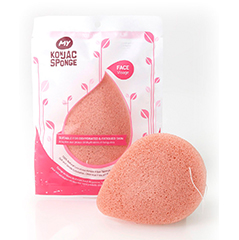Here’s How to Dry Brush the Right Way—And Why You Should Do It
Denise Vasi
There are a lot of beauty and wellness trends out there with a whole lot of hype surrounding them and very little evidence to back them up. Dry brushing is not one of those trends. In fact, dry brushing may be new to many of us, but it’s been used in Ayurvedic medicine for centuries to detoxify the body by removing ama, or cellular waste products.
Benefits of Dry Brushing
Dry brushing increases your blood circulation and promotes lymph flow and drainage. Basically, it gives your body’s natural detoxification systems a boost. Ayurveda recommends dry brushing, or garshana, for anyone with kapha as their predominant dosha, as this dosha is more likely to suffer from a sluggish lymphatic system.
The practice of dry brushing is beneficial for your skin too, especially when you want to rid yourself of dull winter skin. When you dry brush, you’re sloughing away dead skin cells, leaving your skin feeling smoother and looking more radiant. If you have clogged pores, dry brushing will help take care of them too.
Perhaps one of the most unsung benefits of dry brushing is that it just makes you feel good. It’s like ASMR for your skin. That’s because it stimulates your nervous system. Occupational therapists often give children with anxiety and hyperactivity brushes for their skin to help them with sensory integration; dry brushing does the same thing for adults.
Dry Brushing Essentials
All you really need to dry brush is a natural, stiff-bristled brush—that means fibers from jute, sisal, or cactus. Some people like brushes that fit snugly in the hand, but most people opt for a dry brush with a long handle to make it easier to reach your whole back. Choose whatever feels most comfortable for you. I tend to switch it up.
Maybe you have a loofah in the shower—isn’t it pretty much the same thing? Nope!
When you scrub your skin with a loofah while in a hot shower, it can create a cycle of dry skin. Your skin is exfoliated, but then the heat from the shower dries it out. There’s no substitute for dry brushing.

How to Dry Brush
There’s a method to dry brushing and it needs to be followed. It’s not a willy-nilly scrubbing of the skin; dry brushes have stiff bristles, so do it wrong and you can cause skin irritation. Ouch! Also, because the lymph flows towards the heart, brushing in the opposite direction doesn’t have the same lymph-draining benefits.


Luckily, it’s easy to do it the right way. How to dry brush:
- Dry brush before you take a shower in the morning. It’s not only a great way to help you wake up, it also allows you to rinse off the exfoliated skin right away.
- Start at the bottom of your body. Brush up towards the heart using small, firm strokes.
- Once you reach the top of one section of the body, lift the brush and return back to the bottom—don’t brush in downward strokes.
- Brush from ankles to knees on both legs, then knees to thighs.
- Stomach and lower back are next; brush your stomach in clockwise strokes to stimulate digestion.
- Now, brush your arms, starting with the wrists and moving up to your shoulders.
- When you reach your chest and upper back, brush down—because remember, you’re always brushing towards the heart.
The whole process should take no more than five minutes.
Once you’ve finished dry brushing, hop in the shower and wash as usual. When you get out, it’s a good idea to use a nourishing body oil to help lock in moisture. (Because your skin is freshly exfoliated, it will also better absorb any beneficial ingredients in the oil.)
One caution: don’t dry brush over cuts, acne, eczema, psoriasis, and other skin sores, which can lead to infection. Don’t dry brush your face either—facial skin is too sensitive for traditional dry brushing. You can reap the same benefits with a soft-bristled brush made from nylon if you feel like your face needs some exfoliation. Or my one faves—a konjac sponge.

Dry brushing literally adds only minutes to your morning routine, but with all the benefits it offers, there’s really no reason not to get started now. Your body will thank you for it.












